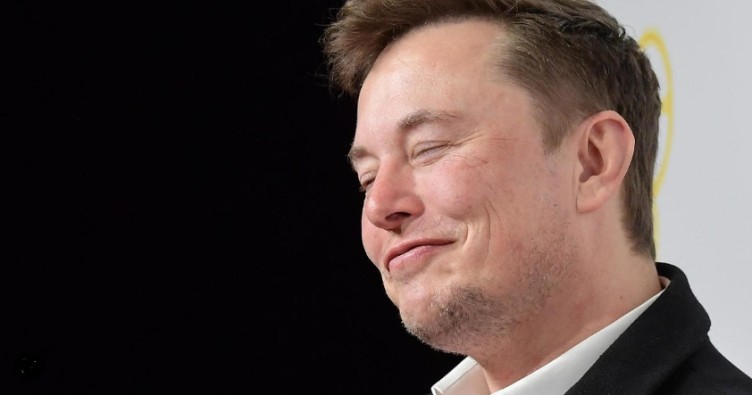
When it comes to competing with Elon Musk’s Tesla the automotive industry is, in many ways, its own worst enemy. For more than two decades the auto industry – in the U.S. and E.U. – has struggled to bring vehicle-to-vehicle communication technology to market – first as dedicated short range communications (DSRC) and then (actually now) as cellular-based C-V2X.
Auto makers created working groups and standards committees to draw up the specifications and identify the applications along with conducting extensive testing. The industry turned to the U.S. and E.U. governments seeking mandates for the emerging technology that was intended to save lives by helping cars avoid collisions.
Musk steered clear of V2X technologies of any variety turning, instead, to radar and camera sensors to guide his vehicles with Autopilot and, now, full self driving (FSD). In the U.S., the U.S. Department of Transportation failed to initiate the final rule making that would have mandated V2X technology. In Europe, opposition to DSRC technology steadily mounted and ultimately blocked a mandate there as well.
The reason for the failure to launch DSRC had to do with the evolution of cellular networks – through 2G, 3G, 4G/LTE, and, now, 5G – and the onset of lower cost and higher resolution cameras. With superior connectivity and cameras – mainly cameras – advanced driver assist systems proliferated along with adaptive cruise control and parking assist functions. In essence, active safety technologies advanced while the V2X vision languished in the file cabinets and on the dockets of regulators and legislators.
After more than 20 years of testing and arguing, V2X remains a dream for automotive engineers to ponder. The C-V2X variety is still awaiting final rule making from – now – the Federal Communications Commission. In fact, the FCC has failed to fast track long-promised waivers for car makers and state transportation authorities to deploy V2X technology. Final rule making lies somewhere further down the road.
This is a shame as V2X technology was designed to enable collision avoidance technologies ranging from identifying vulnerable road users (pedestrians, bicyclists, emergency responders, workers), to synchronizing with traffic signals, managing intersection interactions, avoiding collisions, and a host of more esoteric use cases such as identifying black ice or seeing around corners. V2X was intended to be the cornerstone of vehicle safety by connecting vehicles to other vehicles and infrastructure with low latency communications.
Meanwhile, Tesla has focused nearly its entire enhanced driving value proposition on cameras and the safer driving they enable. Tesla’s Musk long ago dismissed vehicle-to-vehicle communications (the topic rarely comes up any more) along with hydrogen, LiDAR, and even radar – though he appears to be rethinking radar.
Tesla’s latest and most impressive advances using camera technology have been leveraging its full self driving (FSD) technology – for which Tesla owners must pay thousands of dollar – to not only identify signalized intersections but also to identify the signal phase and timing of the lights. Tesla’s equipped with FSD – properly activated and with a vigilant driver – are able to identify red lights and come to a full stop without assistance and restart and proceed on green. (Multiple-lane left turns from traffic lights can still be a challenge as are poorly marked roads.)
Car makers in the U.S. and Europe poured hundreds of millions of dollars into V2X development that has yet to save a single life or convey a single cent of added value to any car. The “legacy” auto industry is staring into an abyss of wasted time, money, and effort to bring a life-saving technology to market – a diversion fueled by the delusion of regulatory endorsement.
To be sure, V2X was a big bet – a huge vision. That vision originally foresaw a massive infrastructure build out dedicated to supporting driving safety and likely to cost “someone” (taxpayers?) billions of dollars. What has emerged from 20+ years of effort is a self-contained technology using existing cellular hardware but not dependent upon the cellular network for its direct communications.
The V2X dream (nightmare?) isn’t over. The FCC is expected to approve waivers for car makers and transportation authorities any day. A final rule will come later. But the decades-long debacle is a lesson in how not to advance driving safety.
The Tesla approach is the classic market-based model. The New Car Assessment Program (NCAP) is yet another market-based model based on conferring or withholding five-star ratings. The USDOT’s NHTSA has come to rely on voluntary adoption of guidelines – as in the case of automatic emergency braking – since the rule-making process appears to have ground to a halt.
The Infrastructure Bill passed last year in the U.S. has multiple safety mandates, but enforcement and adoption protocols are ambiguous. If we have learned nothing else from the V2X project it is that the automotive industry needs to find a new path forward for developing, defining, and deploying safety systems – especially but not exclusively in the U.S.
In the absence of effective safety leadership from USDOT/NHTSA, Tesla has emerged as the voice of reason. That can’t be good. As impressive as FSD is, it is still just a Level 2 semi-automated driving system that is both amazing and terrifying. We need to find a path forward that emphasizes the amazing and dials back the terrifying.
Also Read:
ASIL B Certification on an Industry-Class Root of Trust IP
ATSC 3.0: Sleeper Hit of CES 2023
Share this post via:







Quantum Computing Technologies and Challenges